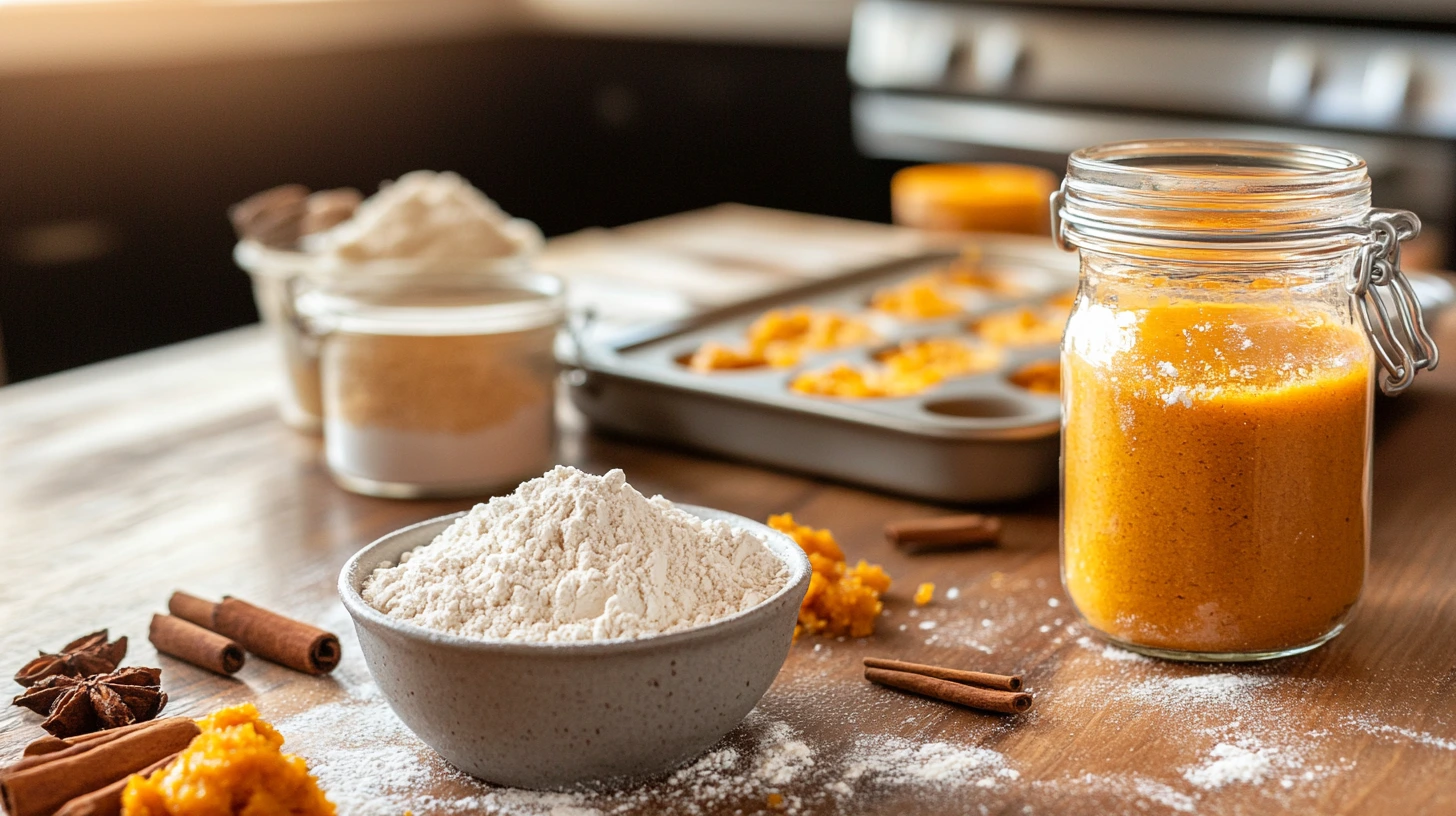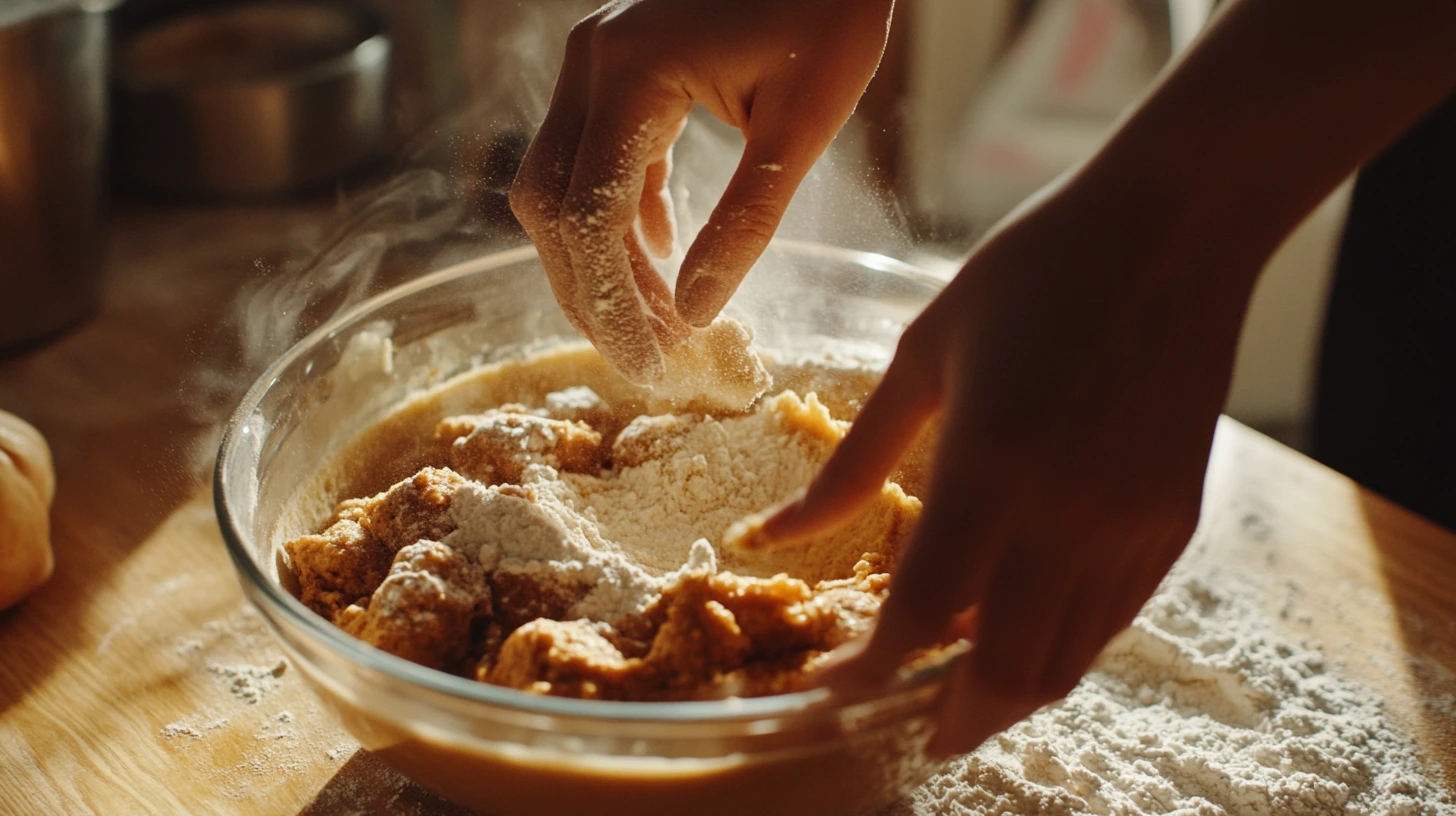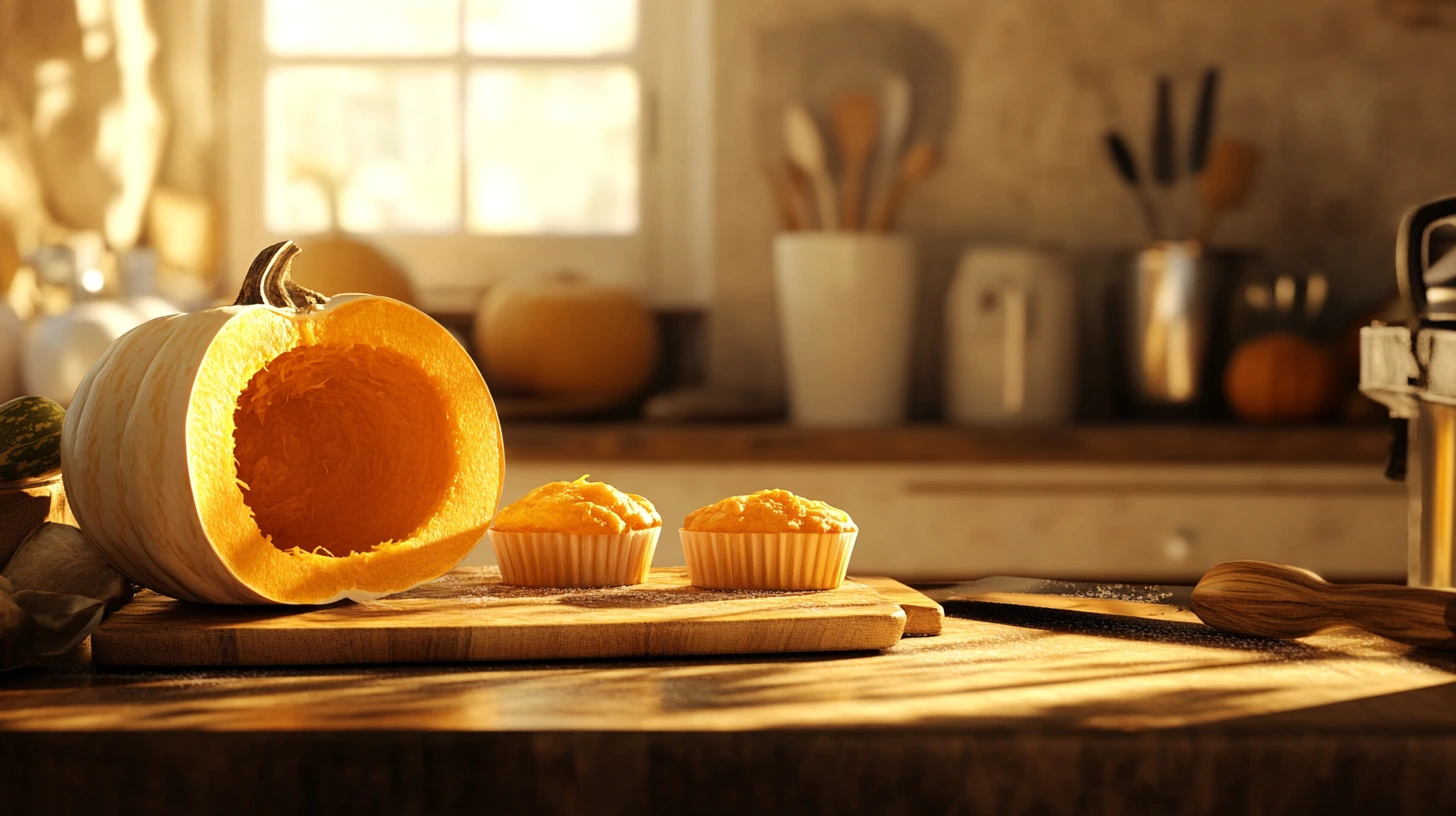Why Are My Pumpkin Muffins Dry?
Nothing is more disappointing than pulling a batch of pumpkin muffins out of the oven only to find them dry and crumbly. While pumpkin is typically used for its moisture and flavor, a few common mistakes can leave your muffins lacking the soft, tender texture you crave. This article will explore why pumpkin muffins turn dry and how to fix it.
The Importance of Moisture in Pumpkin Muffins
Moisture is critical in baking muffins. It ensures a soft crumb, prevents over-dryness, and balances flavor. Pumpkin muffins rely on their moisture content for that perfect melt-in-your-mouth texture. If the balance of wet to dry ingredients is off, the muffins can quickly become dense, dry, or crumbly.
The Role of Pumpkin in Muffins
Pumpkin puree is a star ingredient in pumpkin muffins because it contributes moisture and structure. Unlike other baked goods that rely heavily on fats like butter or oil, pumpkin naturally adds:
- Water Content: Pumpkin is about 90% water, which moistens the muffins.
- Binding Properties: It helps hold the ingredients together, ensuring a smooth texture.
- Flavor & Nutrients: Beyond moisture, pumpkin adds a natural sweetness and richness while providing fiber and vitamins.
Why Are My Pumpkin Muffins Dry?
Nothing is more disappointing than baking pumpkin muffins only to find they are dry and crumbly. Understanding the root causes can help you make perfect, moist muffins every time.
- Too Much Flour
Adding excessive flour to the batter is a common mistake. If you’re not measuring correctly, it can easily throw off your recipe. For guidance on accurate flour use, check out Which Flour is Best for Gluten-Free Bread? for tips on choosing and measuring flour effectively.
- Lack of Fat or Liquid
Fat and liquid, such as oil, butter, or milk, are essential to moisten muffins. If your recipe lacks sufficient fat, the muffins may end up dry. Similarly, consider learning What is the Secret to Moist Muffins? for expert tips on keeping baked goods soft and flavorful.
- Overmixing the Batter
Overmixing can develop the gluten too much, resulting in dense and dry muffins. Instead, mix just until the ingredients come together.
- Overbaking the Muffins
Muffins that are baked too long will lose moisture and become dry. Check your muffins a few minutes before the timer ends to ensure perfect baking. For more tips, check out Why Are My Zucchini Muffins Soggy? to understand how to balance moisture in baked goods.
The Best Techniques to Keep Pumpkin Muffins Moist
If you’re tired of dry pumpkin muffins, mastering the proper techniques will ensure your muffins turn out moist, soft, and flavorful every time. Here’s how to avoid dryness and perfect your baking process.
Proper Mixing Techniques
Mixing the batter correctly is one of the easiest ways to ensure moist muffins. Overmixing can lead to gluten development, resulting in dense and dry muffins.
How to Mix Muffin Batter Without Overmixing:
- Combine the wet and dry ingredients separately
- Gently fold the wet mixture into the dry ingredients using a spatula or wooden spoon. Stop once the flour has been incorporated—some lumps are okay.
- Avoid using an electric mixer, as it’s easy to overmix and ruin the muffin texture.
Adjusting Oven Temperature
Baking at the correct temperature is crucial for maintaining moisture in muffins. An oven that’s too hot or too cold can either dry out your muffins or leave them underbaked.
Tips for the Right Oven Temperature:
- Preheat the oven fully before baking to ensure consistent heat.
- For soft and moist muffins, bake at 350°F (175°C). If your muffins tend to dry out, lower the temperature to 325°F (160°C) and bake a little longer.
- Use an oven thermometer to verify your oven’s accuracy, as many ovens can run hotter or colder than the display.
The Importance of Resting Your Batter
Allowing your batter to rest before baking can improve moisture retention and texture. Resting allows the flour to absorb the liquid, producing more evenly hydrated muffins.
Why Resting the Batter Helps:
- The moisture is evenly distributed throughout the batter, leading to a tender crumb.
- Resting for 10–15 minutes activates the baking powder, ensuring even rising.
- Cover the bowl and let the batter sit at room temperature for even better results.
Substituting Ingredients for Moisture

Sometimes, tweaking the ingredients in your recipe can make all the difference in keeping muffins moist. A few smart substitutions or additions can add moisture without affecting flavor.
Moisture-Boosting Ingredients to Consider:
- Oil: Use vegetable oil instead of butter, as it retains moisture better. For balance, try a mix of oil and melted butter.
- Yogurt or Sour Cream: These dairy products add fat and moisture while giving muffins a tender crumb.
- Applesauce or Mashed Banana: Natural alternatives that boost moisture without adding too much fat.
- Buttermilk or Milk: Replace regular milk with buttermilk for a richer texture and enhanced flavor.
- Pumpkin Puree: Ensure you’re using 100% pure pumpkin puree, not pumpkin pie filling containing added sugar and spices.
Choosing the Right Pumpkin

The quality of the pumpkin you use can significantly impact your muffins’ texture, flavor, and moisture. Whether you opt for fresh or canned pumpkin, understanding the differences will help you choose the best option for your recipe.
Fresh vs. Canned Pumpkin
Both fresh and canned pumpkins can work for muffins, but each has pros and cons. The choice ultimately depends on your time, preference, and desired results.
- Canned Pumpkin:
- Convenience: Canned pumpkin is ready to use, making it a quick and reliable option for busy bakers.
- Consistency: It has a smooth texture and consistent moisture content, ensuring predictable muffin results.
- Flavor: Canned pumpkin often has a slightly more profound, concentrated flavor due to its cooking process.
Best Tip: Always use 100% pure pumpkin puree (not pumpkin pie filling) to avoid added sugars and spices that can alter your recipe.
- Fresh Pumpkin:
- Natural Flavor: Fresh pumpkin can deliver a lighter, more delicate flavor, which some bakers prefer.
- Customization: You control the texture and moisture level of the puree, allowing for adjustments in your recipe.
- Extra Work: Preparing fresh pumpkins requires peeling, cooking, and pureeing, which can be time-consuming.
How to Use Fresh Pumpkin:
- Choose small sugar or pie pumpkins for baking—they are sweeter and have less water content.
- Roast or steam the pumpkin until tender, then puree it until smooth. Strain the excess liquid using a cheesecloth to ensure your muffins stay moist without becoming too wet.
Which Pumpkin is Best for Muffins?
For most home bakers, canned pumpkin is the best choice because of its convenience, consistency, and reliable results. However, if you enjoy the process of preparing fresh pumpkins and want to customize the flavor and texture, fresh pumpkins can be an excellent alternative.
Quick Tip: If you substitute fresh pumpkin puree for canned, measure carefully and consider reducing other liquids slightly, as homemade puree tends to be more watery.
Testing for Muffin Doneness
Ensuring your pumpkin muffins are perfectly baked is key to keeping them moist and tender. Undercooked muffins can collapse and feel gummy, while overbaked muffins often turn dry. Here are two reliable methods to check for doneness.
Toothpick Test
The toothpick test is one of the simplest and most effective ways to check if your muffins are fully baked without overcooking them.
How to Perform the Toothpick Test:
- Insert a clean toothpick into the center of a muffin.
- Remove the toothpick and examine it:
- The muffins are done if they come out clean or have just a few moist crumbs.
- The muffins need more baking time if they come out with a wet batter.
- Repeat the test in a few different muffins to ensure consistency across the batch.
Tip: To avoid overbaking, Begin testing a few minutes before the suggested baking time ends.
Checking Muffin Tops
The appearance and texture of the muffin tops also tell you a lot about whether your muffins are done.
Signs of Well-Baked, Moist Muffins:
- Golden-Brown Color: The tops should be lightly golden or browned, depending on your recipe.
- Springy to the Touch: Gently press the center of a muffin with your fingertip. The muffins are ready if they spring back and don’t leave an indentation.
- Firm but Tender Tops: The tops should feel firm yet tender, not overly hard or crunchy.
Common Mistakes to Avoid
Preventing dry pumpkin muffins starts with understanding common baking pitfalls. You’ll consistently achieve perfectly moist and flavorful muffins by avoiding these mistakes.
Ignoring the Recipe’s Wet-to-Dry Ratio
The balance between wet and dry ingredients is critical for a moist muffin texture. Too much dry ingredient—like flour—can soak up moisture, while insufficient wet ingredients leave the batter unable to bind properly.
How to Maintain the Right Balance:
- Follow the Recipe: Always stick to the measurements in your recipe unless you’re confident making adjustments.
- Measure Accurately: Use proper techniques to measure flour and liquids. Spoon and level your flour to avoid adding excess, and use liquid measuring cups for wet ingredients.
- Check Consistency: The muffin batter should be thick but scoopable. If it looks too dry, add a small amount of milk, yogurt, or pumpkin puree to adjust.
Baking Too Many Muffins at Once

Overcrowding the muffin pan or baking multiple pans simultaneously can affect airflow and heat distribution in the oven. This often leads to unevenly baked muffins, some turning out dry and others undercooked.
Why Overcrowding Affects Texture:
- Muffins may bake unevenly because heat cannot circulate appropriately around each pan.
- Overfilled or too many pans can cause the tops to bake faster while the insides still need to be cooked.
How to Avoid This Mistake:
- Bake in Batches: If you’re making a large batch of muffins, bake one pan at a time in the center of the oven for even heat distribution.
- Leave Space: Ensure each muffin cup is only about ¾ full to allow proper rising without overflow.
- Rotate Pans: If you must bake two pans simultaneously, rotate them halfway through baking and switch their positions on the racks.
Frequently Asked Questions (FAQs)
Here are answers to some common questions about baking, storing, and enhancing pumpkin muffins while keeping them moist and delicious.
Can I use a different type of flour for my muffins?
Yes, you can substitute other flours, but the results may vary.
- All-Purpose Flour: The most reliable choice for tender muffins.
- Whole Wheat Flour adds a nutty flavor but can make muffins denser and drier. For balance, use a mix of whole wheat and all-purpose flour.
- Gluten-Free Flour: For a gluten-free option, use a 1:1 gluten-free baking flour blend. If the batter seems dry, add an extra tablespoon of liquid (like milk).
- Almond or Oat Flour: These are great alternatives for specific diets, but they can change the texture. Combine with binding agents like eggs or xanthan gum for better structure.
Tip: Always measure flour accurately and adjust liquids if needed.
How can I store my muffins to keep them moist?
Proper storage ensures your muffins stay soft and fresh for days.
- Room Temperature: Store muffins in an airtight container or resealable bag. Add a paper towel at the bottom and top to absorb excess moisture. They’ll stay fresh for 2–3 days.
- Avoid Direct Sunlight: Keep muffins in a cool, dry place.
- Reheat if Needed: Warm muffins slightly in the microwave for 10–15 seconds to restore softness.
What is the best way to add flavor without drying?
Adding flavor doesn’t mean sacrificing moisture. Here’s how:
- Spices: Add cinnamon, nutmeg, ginger, or allspice to enhance flavor. They don’t affect the texture.
- Extracts: Use vanilla or almond extract sparingly—just a teaspoon can make a big difference.
- Add Moist Ingredients: For flavor without drying out the batter, include mix-ins like chocolate chips, fresh or dried fruits (e.g., cranberries), or nuts.
- Molasses or Maple Syrup: A small amount adds moisture and a rich depth of flavor.
Should I refrigerate pumpkin muffins?
Refrigeration is sometimes necessary unless muffins contain perishable toppings like cream cheese frosting.
- Plain Muffins: Avoid refrigerating them, as cold air can dry them out faster.
- Frosted or Filled Muffins: Refrigerate in an airtight container for 4–5 days. Bring to room temperature or warm briefly before serving for the best texture.
Tip: If you must refrigerate, wrap muffins individually in plastic wrap to retain moisture.
Can I freeze pumpkin muffins for later use?
Yes! Freezing is a great way to extend the life of your muffins without losing moisture.
How to Freeze Pumpkin Muffins:
- Let muffins cool completely.
- Wrap each muffin individually in plastic wrap to prevent freezer burn.
- Please place them in a freezer-safe bag or airtight container.
- Label with the date—muffins stay fresh for up to 3 months.
How to Reheat:
- Thaw at room temperature for a few hours or microwave a frozen muffin for 30–45 seconds.
What is the ideal baking time for pumpkin muffins?
The baking time for pumpkin muffins depends on the recipe and oven temperature:
- Standard Muffins: Bake at 350°F (175°C) for 18–22 minutes. Start checking for doneness around the 18-minute mark.
- Mini Muffins: Bake at the same temperature for 10–12 minutes.
- Jumbo Muffins: Increase baking time to 25–30 minutes while keeping the same temperature.
Conclusion: How to Ensure Your Pumpkin Muffins Are Always Moist
Achieving perfectly moist pumpkin muffins doesn’t have to be a challenge. By understanding common mistakes, selecting the right ingredients, and using proper techniques, you can bake soft, flavorful, and tender muffins every time.
Quick Tips for Moist Pumpkin Muffins
- Use the proper flour-to-liquid ratio.
- Include moisture-rich ingredients like pumpkin puree, yogurt, or oil.
- Avoid overbaking—test with a toothpick for doneness.
- Use a quality recipe like this delicious Pumpkin Muffin Recipe for reliable results.
By following these tips and understanding the reasons behind dry muffins, you can enjoy perfect pumpkin muffins every time. For more baking tips, explore variations or troubleshoot other baking issues by checking related guides like What is the Trick to Making Cake Pops?

